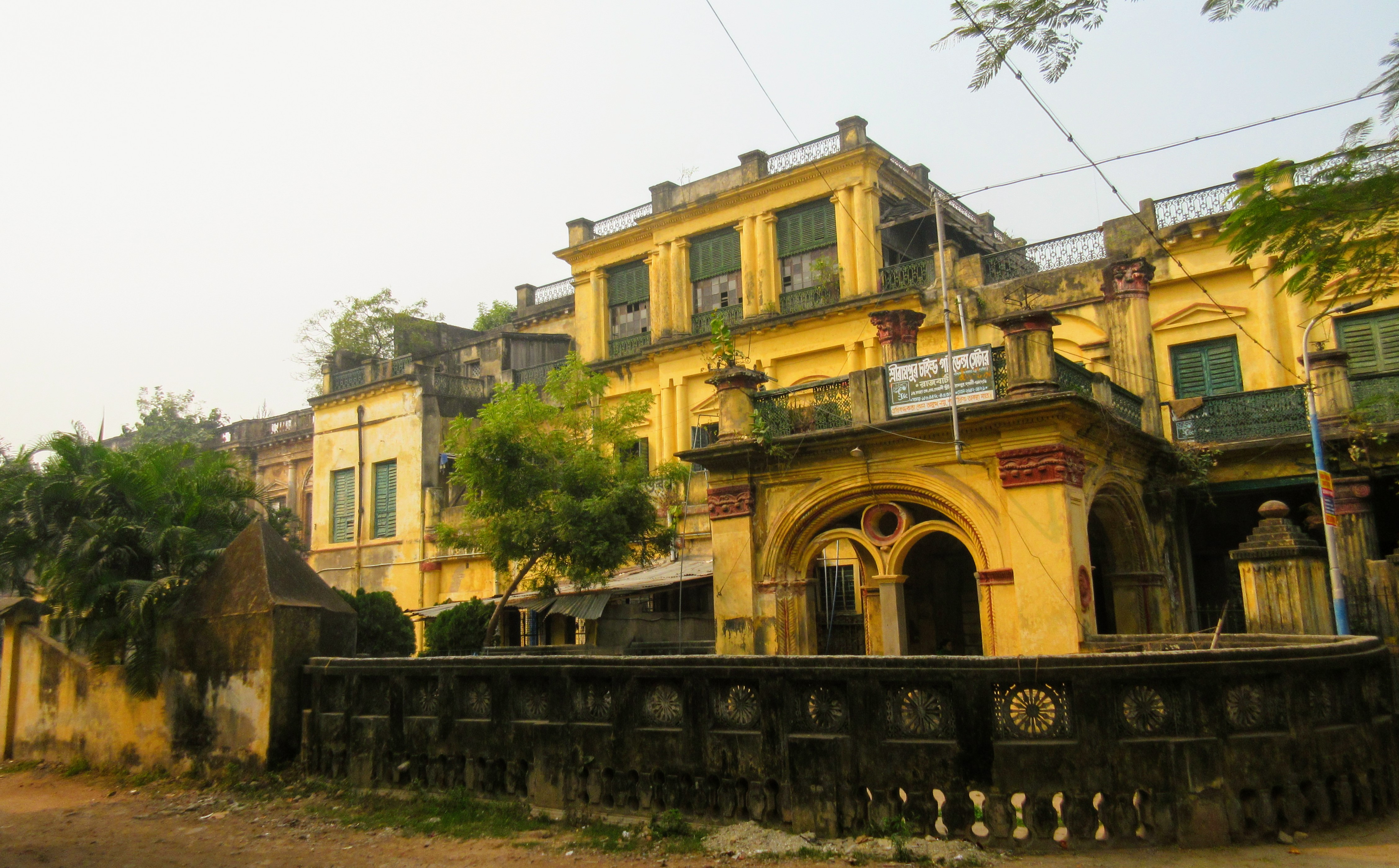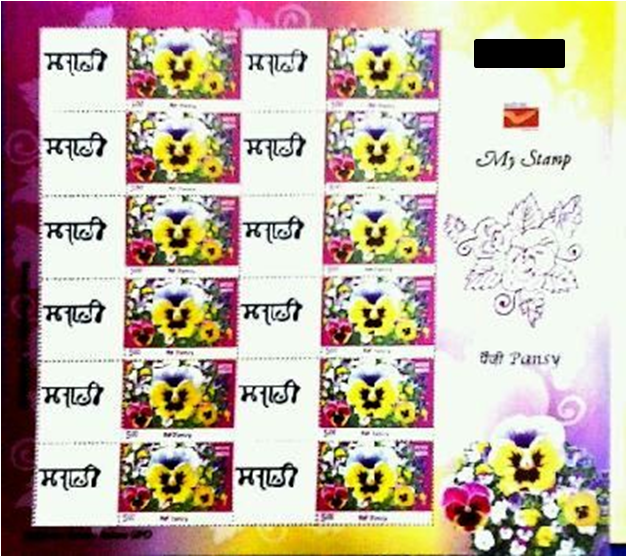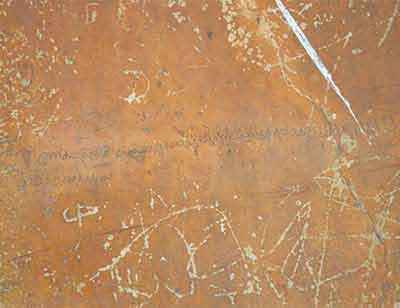|
Marathi Script
Balabodh (, , , translation: understood by children) is a slightly modified style of the Devanagari script used to write the Marathi language and the Korku language. What sets balabodha apart from the Devanagari script used for other languages is the more frequent and regular use of both ळ /ɭ/ (retroflex lateral approximant) and र् (called the eyelash reph / raphar). Additionally, Balbodh style has ऍ/ॲ and ऑ as adaptations to pronounce [æ] and [ɒ] in English-based words. Another distinctive feature is the use of Anusvara over trailing अ, denoting lengthening of the trailing vowel. Etymology The word balabodha is a combination of the words ‘बाळ’ /baːɭ/ and ‘बोध’ /boːd̪ʱ/. ‘बाळ’ is a neuter noun derived from the Sanskrit word ''bāla'' "child". ‘बोध’ is a male noun and a tatsama meaning "perception". As far as the Marathi literature is concerned, Bāḷabōdha can be assumed to be composed of "bāḷa" meaning prima ... [...More Info...] [...Related Items...] OR: [Wikipedia] [Google] [Baidu] |
Kauravi Dialect
Kauravi (, ), also known as Khaṛībolī, is a dialect of Hindustani descended from Shauraseni Prakrit that is mainly spoken in northwestern Uttar Pradesh, outside of Delhi. Modern Hindi and Urdu are two standard registers of Hindustani, descending from Old Hindi, originally called Hindavi and Delhavi which gained prestige when it was accepted along with Persian as a language of the courts. Before that, it was only a language the Persianate states (like Delhi Sultanate) spoke to their subjects in, and later as a sociolect of the same ruling classes. Modern Khariboli contains some features, such as gemination and pitch accent, which give it a distinctive sound and differentiates it from Braj and Awadhi. Old Hindi evolved to become the colloquial lingua franca Hindustani from which are Hindi and Urdu the respective standard registers. Geographical distribution Khariboli is spoken in the rural surroundings of Delhi and west Uttar Pradesh, as well as in some neighbour ... [...More Info...] [...Related Items...] OR: [Wikipedia] [Google] [Baidu] |
Austroasiatic Languages
The Austroasiatic languages ( ) are a large language family spoken throughout Mainland Southeast Asia, South Asia and East Asia. These languages are natively spoken by the majority of the population in Vietnam and Cambodia, and by minority populations scattered throughout parts of Thailand, Laos, India, Myanmar, Malaysia, Bangladesh, Nepal, and southern China. Approximately 117 million people speak an Austroasiatic language, of which more than two-thirds are Vietnamese language, Vietnamese speakers. Of the Austroasiatic languages, only Vietnamese language, Vietnamese, Khmer language, Khmer, and Mon language, Mon have lengthy, established presences in the historical record. Only two are presently considered to be the national languages of sovereign states: Vietnamese in Vietnam, and Khmer in Cambodia. The Mon language is a recognized indigenous language in Myanmar and Thailand, while the Wa language is a "recognized national language" in the de facto autonomous Wa State within M ... [...More Info...] [...Related Items...] OR: [Wikipedia] [Google] [Baidu] |
Munda Languages
The Munda languages are a group of closely related languages spoken by about eleven million people in India, Bangladesh and Nepal. Historically, they have been called the Kolarian languages. They constitute a branch of the Austroasiatic language family, which means they are more distantly related to languages such as the Mon and Khmer languages, to Vietnamese, as well as to minority languages in Thailand and Laos and the minority Mangic languages of South China. Bhumij, Ho, Mundari, and Santali are notable Munda languages. The family is generally divided into two branches: North Munda, spoken in the Chota Nagpur Plateau of Jharkhand, Chhattisgarh, Bihar, Odisha and West Bengal, as well as in parts of Bangladesh and Nepal, and South Munda, spoken in central Odisha and along the border between Andhra Pradesh and Odisha. North Munda, of which Santali is the most widely spoken and recognised as an official language in India, has twice as many speakers as South Munda. A ... [...More Info...] [...Related Items...] OR: [Wikipedia] [Google] [Baidu] |
Serampore
Serampore (also called Serampur, Srirampur, Srirampore, Shreerampur, Shreerampore, Shrirampur or Shrirampore) is a city in Hooghly district in the Indian state of West Bengal. It is the headquarters of the Srirampore subdivision. It is a part of the area covered by Kolkata Metropolitan Development Authority (KMDA). It is a pre-colonial city on the west bank of the Hooghly River. It was part of Danish India under the name Frederiknagore from 1755 to 1845. Geography Location Serampore is located at . The area consists of flat alluvium, alluvial plains, that form a part of the Gangetic Delta. This belt is highly industrialised. Police stations Serampore police station has jurisdiction over Serampore and Baidyabati Municipal areas, and parts of Sreerampur Uttarpara CD Block. Serampore Women police station has been set up. Urbanisation Srirampore subdivision is the most urbanized of the subdivisions in Hooghly district. 73.13% of the population in the subdivision is urban and ... [...More Info...] [...Related Items...] OR: [Wikipedia] [Google] [Baidu] |
William Carey (missionary)
William Carey (17 August 1761 – 9 June 1834) was an English Christian missionary, Particular Baptist minister, translator, social reformer and cultural anthropologist who founded the Serampore College and the Serampore University, the first degree-awarding university in India and cofounded the Serampore Mission Press. He went to Calcutta (Kolkata) in 1793, but was forced to leave the British Indian territory by non-Baptist Christian missionaries. He joined the Baptist missionaries in the Danish colony of Frederiksnagore in Serampore. One of his first contributions was to start schools for impoverished children where they were taught reading, writing, accounting and Christianity. He opened the first theological university in Serampore offering divinity degrees, and campaigned to end the practice of sati. Carey is known as the "father of modern missions."Gonzalez, Justo L. (2010) ''The Story of Christianity'' Vol. 2: The Reformation to the Present Day, Zondervan, , p. 4 ... [...More Info...] [...Related Items...] OR: [Wikipedia] [Google] [Baidu] |
Modi Script
Modi (, 𑘦𑘻𑘚𑘲, , ) is a script used to write the Marathi language, which is the primary language spoken in the state of Maharashtra, India. There are multiple theories concerning its origin. The Modi script was used alongside the Devanagari script to write Marathi until the 20th century when the Balbodh style of the Devanagari script was promoted as the standard writing system for Marathi. Etymology The name "Modi''"'' may be derived from the Marathi verb ''moḍaṇe'' ( Marathi: मोडणे), which means "to bend or break". Modi is believed to be derived from broken Devanagari characters, which lends support to that particular etymology. Origin theories Hemāḍpant origin theory Hemāḍpant was a minister during the reign of Mahadeva (ruled 1261–1271) and the initial years of the reign of Rāmachandra (ruled 1271 to 1309) of the Yadava Dynasty. Creation subtheory Hemāḍapanta created the Modi script. Refinement subtheory The Modi sc ... [...More Info...] [...Related Items...] OR: [Wikipedia] [Google] [Baidu] |
Consonant Cluster
In linguistics, a consonant cluster, consonant sequence or consonant compound is a group of consonants which have no intervening vowel. In English, for example, the groups and are consonant clusters in the word ''splits''. In the education field it is variously called a consonant cluster or a consonant blend. Some linguists argue that the term can be properly applied only to those consonant clusters that occur within one syllable. Others claim that the concept is more useful when it includes consonant sequences across syllable boundaries. According to the former definition, the longest consonant clusters in the word ''extra'' would be and , whereas the latter allows , which is phonetically in some accents. Phonotactics Each language has an associated set of phonotactic constraints. Languages' phonotactics differ as to what consonant clusters they permit. Many languages are more restrictive than English in terms of consonant clusters, and some forbid consonant clusters ... [...More Info...] [...Related Items...] OR: [Wikipedia] [Google] [Baidu] |
Sinhala Language
Sinhala ( ; Sinhala: , , ), sometimes called Sinhalese ( ), is an Indo-Aryan language primarily spoken by the Sinhalese people of Sri Lanka, who make up the largest ethnic group on the island, numbering about 16 million. It is also the first language of about 2 million other Sri Lankans, as of 2001. It is written in the Sinhalese script, a Brahmic script closely related to the Grantha script of South India. The language has two main varieties, written and spoken, and is a notable example of the linguistic phenomenon known as diglossia. Sinhala is one of the official and national languages of Sri Lanka. Along with Pali, it played a major role in the development of Theravada Buddhist literature. Early forms of the Sinhalese language are attested to as early as the 3rd century BCE. The language of these inscriptions, still retaining long vowels and aspirated consonants, is a Prakrit similar to Magadhi, a regional associate of the Middle-Indian Prakrits that had been ... [...More Info...] [...Related Items...] OR: [Wikipedia] [Google] [Baidu] |
Tamil Language
Tamil (, , , also written as ''Tamizhil'' according to linguistic pronunciation) is a Dravidian language natively spoken by the Tamil people of South Asia. It is one of the longest-surviving classical languages in the world,. "Tamil is one of the two longest-surviving classical languages in India" (p. 7). attested since 300 BC, 300 BCE.: "...the most acceptable periodisation which has so far been suggested for the development of Tamil writing seems to me to be that of A Chidambaranatha Chettiar (1907–1967): 1. Sangam Literature – 200BC to AD 200; 2. Post Sangam literature – AD 200 – AD 600; 3. Early Medieval literature – AD 600 to AD 1200; 4. Later Medieval literature – AD 1200 to AD 1800; 5. Pre-Modern literature – AD 1800 to 1900" at p. 610 Tamil was the lingua franca for early maritime traders in South India, with Tamil inscriptions found outside of the Indian subcontinent, such as Indonesia, Thailand, and Egypt. The language has a well-documented history wit ... [...More Info...] [...Related Items...] OR: [Wikipedia] [Google] [Baidu] |
Kannada
Kannada () is a Dravidian language spoken predominantly in the state of Karnataka in southwestern India, and spoken by a minority of the population in all neighbouring states. It has 44 million native speakers, and is additionally a second or third language for 15 million speakers in Karnataka. It is the official and administrative language of Karnataka. It also has scheduled status in India and has been included among the country's designated classical languages.Kuiper (2011), p. 74R Zydenbos in Cushman S, Cavanagh C, Ramazani J, Rouzer P, ''The Princeton Encyclopedia of Poetry and Poetics: Fourth Edition'', p. 767, Princeton University Press, 2012, Kannada was the court language of a number of dynasties and empires of South India, Central India and the Deccan Plateau, namely the Kadamba dynasty, Western Ganga dynasty, Nolamba dynasty, Chalukya dynasty, Rashtrakutas, Western Chalukya Empire, Seuna dynasty, kingdom of Mysore, Nayakas of Keladi, Ho ... [...More Info...] [...Related Items...] OR: [Wikipedia] [Google] [Baidu] |






